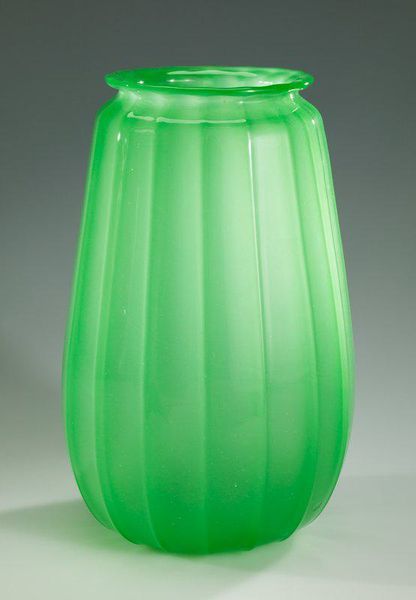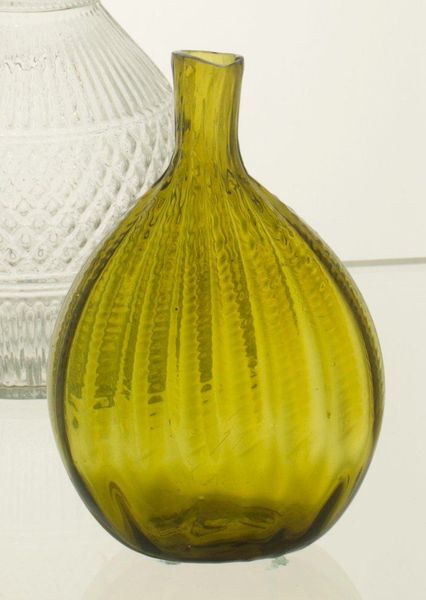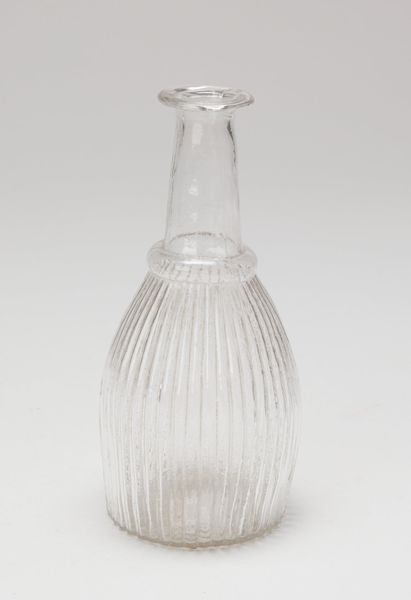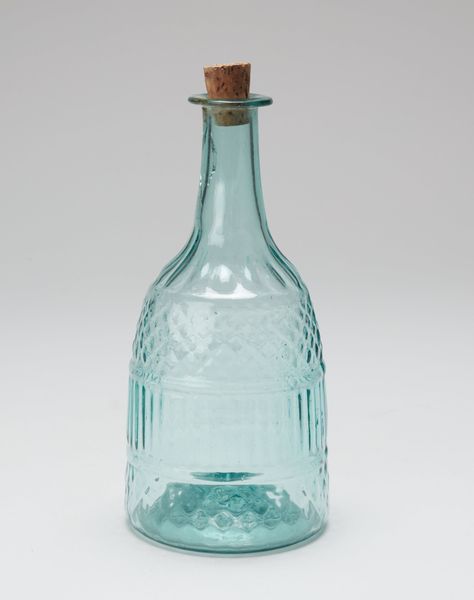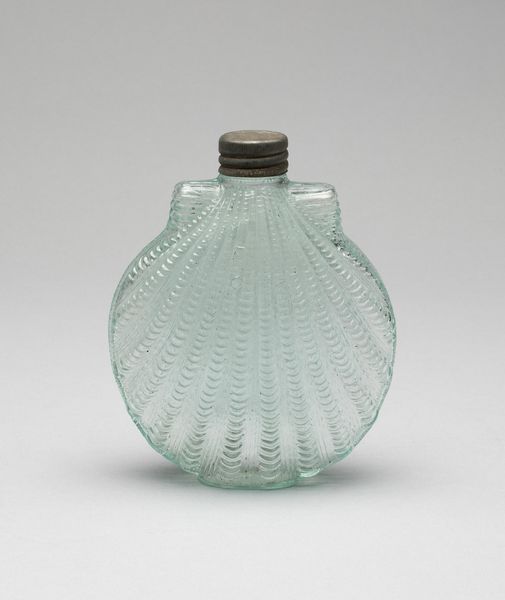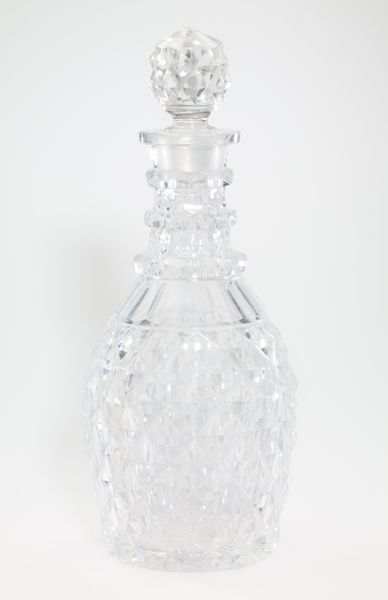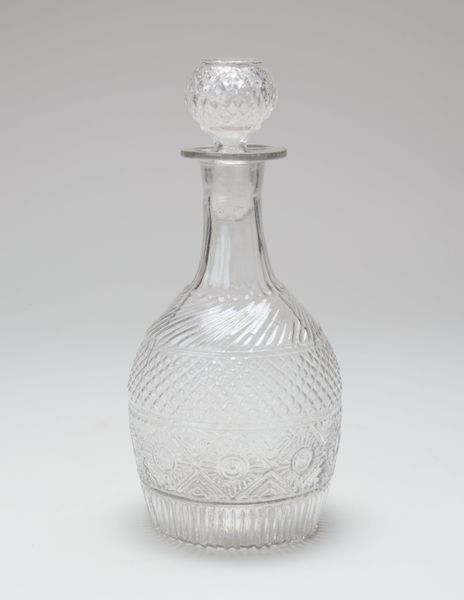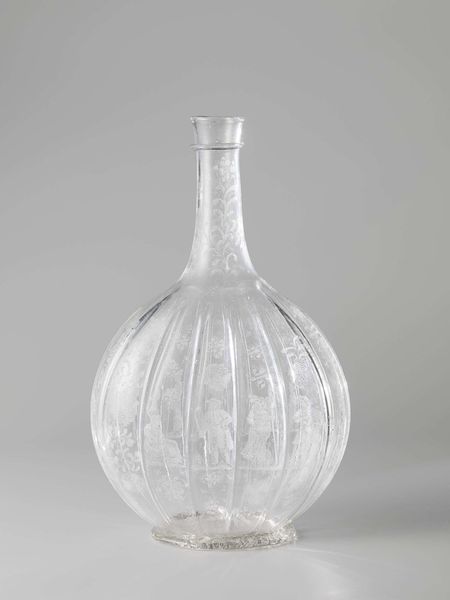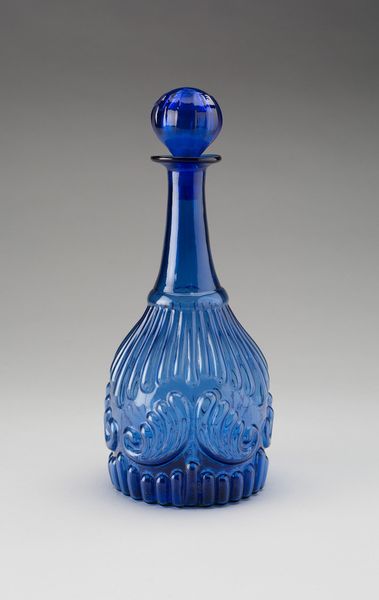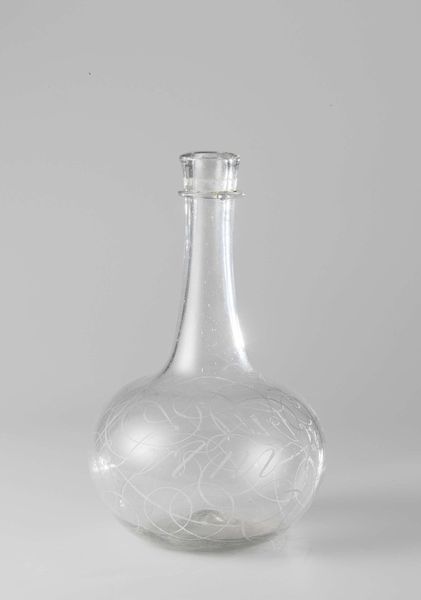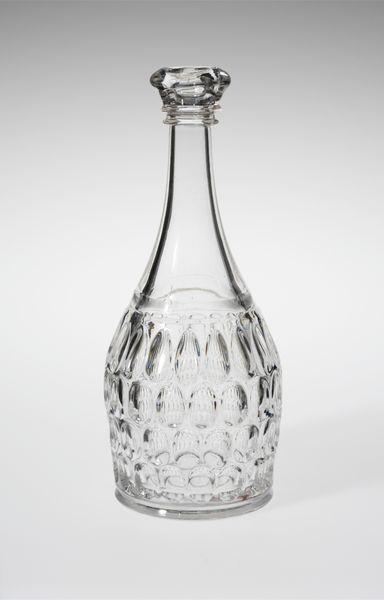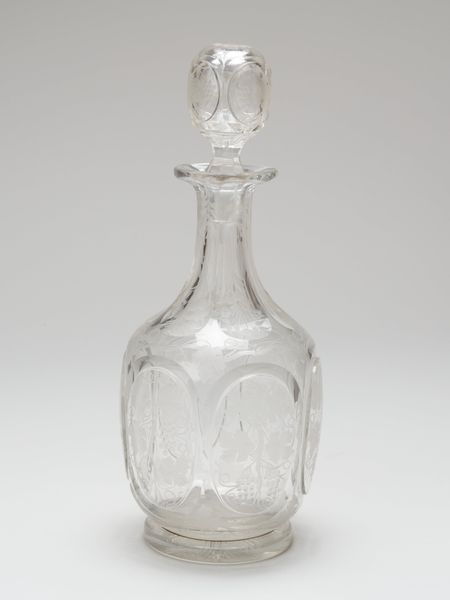
glass
#
glass
#
decorative-art
Copyright: Public Domain
Editor: Here we have an absolutely charming pale yellow decanter. It was crafted sometime between 1835 and 1865, made of glass. The artist is unfortunately unknown, but what an object! There’s something very delicate and almost luminous about it. I'm curious about your perspective. What catches your eye in this piece? Curator: It’s precisely its luminescence that speaks volumes. Consider the glass itself – how was it made, this particular yellow hue achieved? Was it a common colorant, impacting its value, or something rarer, connecting it to specific workshops and technologies? We need to consider how accessible such a vessel was. Editor: Accessible? You mean, who would have been able to afford something like this back then? Curator: Exactly! The glassmaking process, even then, involved a certain level of skill and specialized labor. Was it hand-blown? Was it mass-produced in molds? Look closely at the ridges; are they perfectly uniform? Imperfections often reveal the hand of the maker, grounding the object in its means of production, and how industrial or not that was for the period. Editor: So, rather than focusing solely on its aesthetic value, you're suggesting we investigate the social and economic factors intertwined with its creation? Who made it, how, and for whom? Curator: Precisely! The answers to these questions reveal a deeper understanding of the decanter's significance beyond mere decoration. Think about it, how did glass production methods at the time define social hierarchies by either facilitating widespread affordable production or fostering exclusive luxury markets? We also can't ignore its utility: what kind of labor and consumption was this used for? Editor: That’s fascinating. It shifts my perspective entirely. I was focused on its appearance, but now I’m imagining the historical context of labor and industry of decorative art in the 19th century, just with one glass object. Curator: Exactly, now you're thinking like a materialist. It gives one a different understanding of how this 'simple' piece of glass reflects bigger histories.
Comments
No comments
Be the first to comment and join the conversation on the ultimate creative platform.
